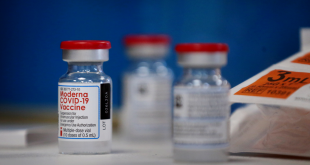Last week, I wrote that off-road fever was about to grip the Parker area. And grip it did. 240 screaming vehicles flew 425 miles across the desert floor, kicking dust into the atmosphere and giving us the excitement (and a great sunset!) to go with it. I covered the race from KLPZ’s Parker studio, helping the rest of the KLPZ team compile several different sources of race info into one live broadcast. By the end, I was exhausted, and I thought it was this fatigue that explained my sore throat by the evening’s end.
But then my wife Melissa arrived home, telling me that she’d come down with a head cold. This made it extremely likely that I was coming down with it too. Agh. Good thing I’d already found the cure for the common cold.
That’s right: several years ago I came upon the cure for the cold, and here’s a hint: it’s not Airborne.
Airborne is the big-selling common cold remedy, despite the fact that no clinical trial has ever proven it to work. What is it, exactly? Well it’s just a collection of vitamins, herbs and minerals, packaged and marketed cleverly enough to convince people that it works (it’s formulated by a former teacher, for the love of God, the logic of which evidently appeals to the masses). I’ve lost count of the number of people who swear that it worked for them.
What’s actually happening is that they are simply speculating that their colds would have been longer without Airborne. Colds are self-limiting and last only a finite period of time, so one may feel that the product they are using when it goes away deserves the credit for ending it. That would be an error in thinking. Most people are just so happy to be better that they don’t care anymore, until the next time someone gets a cold and they tell them to load up on Airborne. Anyway, a special magical formula Airborne is not, and I wanted something that’s actually been documented to work in clinical trials.
Does such a thing exist?
Well, it turns out that it does. George Eby is the world’s leading expert on the use of zinc (hold on, not just any zinc) to reduce the severity and strength of the common cold. Zinc helps to sustain all life on earth. It’s a metal, and a food additive. You may be aware of using zinc to treat the common cold; there are several such products available at the drug store and – because everyone gets colds and everyone hates them – they sell. But they don’t sell primarily because they work; they sell merely because people think they may work, and they don’t believe anything more likely to work is available. (Actually, the products which have the most pronounced ‘effect’ on the cold are pain killers, decongestants and antihistamines, but they aren’t ‘curing’ anything. They’re just relieving symptoms, and are welcome because of that.)
The formulation of zinc used in most cold products is Zinc Gluconate (a compound two parts gluconate, one part zinc). I walked around the pharmacy the other day looking for a zinc product in the cold and flu aisle not based on Zinc Gluconate; I couldn’t find one. The problem is that the ability of Zinc Gluconate to help is disputed by science. A 2000 systematic review by the Cochrane Library referred to the evidence of benefit as inconclusive. The Harvard Family Health Guide stated in 2001 that one study suggested that “zinc lozenges have little, if any, beneficial effect on the treatment of the common cold.”
So much for zinc in its ability to cure the cold, right? Eby decided not. He decided to try other formulations, and performed a study in 1984 using Zinc Acetate which showed that – bingo! – it reduced the duration of colds by 7 days. Not only that, but a British Medical Survey study supported his conclusions in 1987. Finally, a cure for the common cold!
(Incidentally, ten more studies have since been conducted on Zinc Acetate, and five of them found no benefits. How could this be? Eby went back to work. What he’s found since then is that the beneficial effect was limited to his Zinc Acetate lozenges containing positively charged ions. When the zinc ions were positively charged, they had the effect of significantly reducing the length and severity of the common cold, which explained why some of the studies showed that it didn’t work; they weren’t using the positive-ion formula. In fact, negatively-charged ions had the opposite effect by actually lengthening colds! He took this knowledge, and worked further on the size and dosage of the lozenges for maximum effect, et viola.)
Now, being the smart man Eby is, he immediately patented this precise formulation of positive-ion Zinc Acetate. And, being a scientist rather than a businessman, he had no idea how to market it in the way Airborne (“created by a teacher”) did. The result is that almost nobody knows that his scientifically sound product exists.
When I first read about it, I ordered a big bottle of it from Eby’s website. When I caught my next cold, I followed the directions and noticed that my cold was going away after only about 48 hours of my first symptoms. And ever since, I’ve hit Eby’s zinc every time I’ve caught a cold, meaning that I haven’t missed a day of work due to a cold in years.
Unfortunately, Eby has never been able to get mass production of the lozenges, and only has limited supplies available. So, this remains one of the world’s best-kept secrets.
You’re welcome.
John Wright
Day 3 – No sniffles
 Parker Live News from the Parker Strip since 2009.
Parker Live News from the Parker Strip since 2009.










